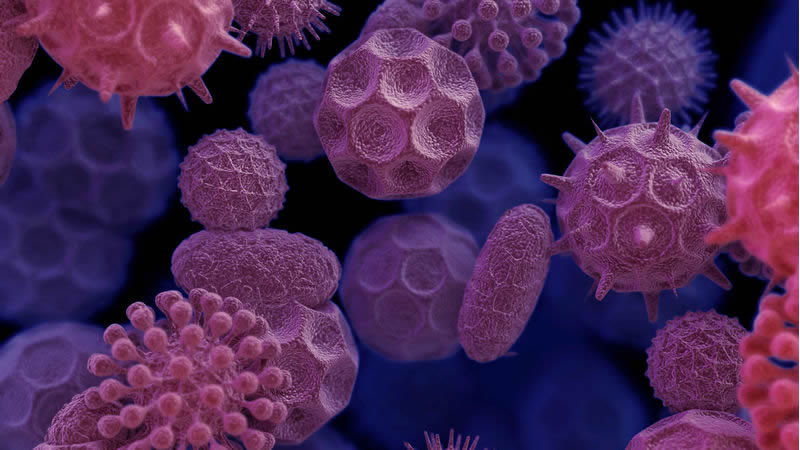
A key factor in aging is senescent cells, how can you remove senescent cells? What can be done about it?
Let’s understand what they are and how they are formed. But more importantly are there any ways we can remove senescent cells, or perhaps slow down or reduce the overall numbers? Furthermore, why is this and important topic?
What is the meaning of senescent cells?
Old cells that have died and can no longer regenerate are senescence cells. They accumulate as we age. This accumulation occurs in tissues.
Currently, science is using genetic treatments and drugs to destroy senescent cells because they are associated with a wide range of age-related diseases and disabilities in mice. There is also evidence to suggest that natural supplements may play a strong role in helping and supporting the body to destroy these cells. One such supplement I know of that is about to be released is Sisel’s D Bomb supplement. However, that is a conversation for another article.
What causes cell senescence?
Cells can die (become senescence) due to a variety of stressors. In this article we are focusing specifically on the cellular stress caused by genotoxins such as environmental stressors and exposure to toxins.
[In genetics, genotoxicity describes the property of chemical agents that damages the genetic information within a cell causing mutations, which may lead to cancer. While genotoxicity is often confused with mutagenicity, all mutagens are genotoxic, whereas not all genotoxic substances are mutagenic.] Ref.
At what age does senescence begin?
So senescence in humans would start sometime in your 20s, once you have reached your peak, after which time you start to age and your body starts to decline. The creation of senescence then continues for the rest of your life.
How can a cell become immortal? Thus avoiding cell death – senescence?
The most important factor in cell immortality is the telomere length. As DNA is damaged telomeres shorten. One of the biggest factors in DNA damage is genotoxic substances. Science hypothesis that if you can control your telomere length you can avoid cell senescence and therefore become immortal. You may want to consider getting your telomeres tested.
What are senescent cells and why are they important?
“In most cases, senescent cells have been shown to drive degenerative changes. They can disrupt normal tissue structures (causing damage to the surrounding cells), which are essential for normal tissue function. Senescent cells also fuel overt age-related diseases.” Ref
There are many genotoxic substances you may not be aware of, both of which cause cellular stress. Let’s look at the following places and ways in which you can be exposed to a myriad of toxins (genotoxic substances).
Not only do we want to remove senescent cells we want to minimise their numbers
Ideally, you would do both, that is to remove senescence cells as well as take action to try to prevent and minimise them where possible. The key factor here is avoiding genotoxic substances that hasten their creation.
Here are some recommendations from the PRHE that you should consider. I have modified some of it and added bits in. The reference for this information is here.
Use nontoxic personal care products
Many such products contain ingredients that can harm reproductive health, but safer options are available. One brand that is renown for producing safe products is Sisel. They have a range of bathroom, skin care and cleaning products that can help you reduce your toxic load and exposure to genotoxins.
Choose safer home improvement products
Many paints, glues and flooring materials release toxic chemicals and volatile organic compounds (VOCs). This happens long after you complete a project. Your local paint store will have various brands that fit the VOC free product category. Ask for VOC-free and water-based products.
Mop and dust often
Toxic substances like lead, pesticides and flame retardants are present in household dust. This may come as quite a shock to you. By using a wet mop or wet cloth you collect and remove some of these nasty substances, thus reducing your toxic load. It is a good idea to regularly clean floors and flat surfaces. Remember use no chemicals or toxin free cleaning chemicals.
Clean with nontoxic products.
It is easy and cheap to make effective, nontoxic cleaners with common ingredients like vinegar and baking soda. Sisle produces safe dish soap (Asepti-Clean Dish Soap) and Vibtrant Laundry detergent. I have used the Everbrite Vibrant Laundry detergent on my carpet before to remove stains and it does a wonderful job.
Remove your shoes inside
Outdoor shoes can carry toxic chemicals into your home. This makes sense you walk over grass that has been sprayed.
Don’t dry-clean your clothes
Many dry cleaners use toxic chemicals. Hand-wash delicate clothes or ask your dry cleaner to use water instead of chemicals.
Avoid pesticides and herbicides
Toxic chemicals used to kill insects, rodents, weeds, bacteria, mold and other noxious animals and plants can also harm your health. They also damage your DNA and can be considered Genotoxins. Not only is it harmful to you, but it also puts your pets at risk too. Look for safe toxic free alternatives.
Select flame-retardant-free foam products
Crib mattresses, standard mattresses, nap mats, and other upholstered products can contain flame-retardants, which can harm health and affect a child’s brain. Instead, select foam products labeled as “flame-retardant-free” or tagged as compliant with TB-117-2013. You will need to pay close attention to the labels to ensure they are safe.
Avoid toxins in your food and water
Whenever possible, eat organic food to reduce your exposure to pesticides. Fruits and vegetables are commonly sprayed with nasty chemicals, including roundup or glyphosate. If you can afford organic purchase Sisel’s Organicleanse to clean your fruits and vegetables. If you can’t afford either organic produce or Sisel’s organicleanse, choose the fruits and vegetables with the least pesticide residue and avoid the most contaminated ones. Also purchased a good quality filter that removes unwanted contaminants from your water.
Limit foods high in animal fat
Toxic chemicals are stored in fat in both animals and humans. Many nasty chemicals can build up in animal fat. It is a good idea to avoid it.
Use less plastic
Choose glass, stainless steel or ceramic containers for food. Don’t use plastic containers for hot foods or drinks. Use glass instead of plastic in the microwave, because heat makes plastic release chemicals. You can empty food held in plastic containers into a ceramic or glass bowl before heating.
Avoid lead exposure
This is a tricky one as it may be lurky in places unexpected Any home built before 1978 may have lead paint. There may also be lead in household dust and garden soil.
Keep mercury out of your diet, and home
Eat fish with lower levels of mercury. Replace your mercury thermometer with a digital one. Some fish contain higher mercury levels than others check this chart for which fish are the safest.
Avoid canned foods and beverages
Eat fresh or frozen fruits and vegetables. Avoid tinned and canned food. This limits your exposure to BPA, a toxic substance used in the lining of most cans.
This list provides a really good list to begin reducing your toxic exposure and ultimately doing the best to minimising DNA damage and ultimately senescence cells. Following this won’t remove senescent cells but it will go a long way into reducing the potential for senescence cell creation and slowing the overall process down. After all who wants to grow old fast?
Last Updated on March 27, 2023 by Katie Sisel Distributor
